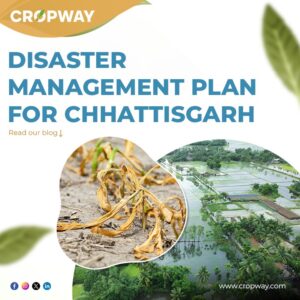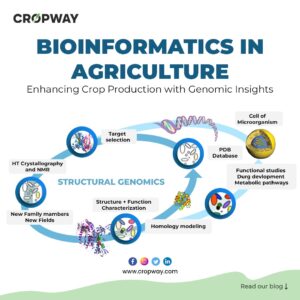
With the market for agricultural drones reaching a whopping $1.3 billion, UAVs (unmanned aerial vehicles) fill the gap left by human error and inefficiency in traditional farming methods.In the ever-evolving landscape of modern agriculture, the integration of drone technology has emerged as a game-changer for farmers seeking precision, efficiency, and increased yields.
Many of these advantages arise from the eradication of guesswork and the reduction of uncertainty. The success of farming often hinges on numerous factors beyond the control of farmers, such as climate change-affected weather conditions, soil quality, temperature, precipitation, and more. Efficiency in farming relies heavily on the farmers’ capacity to adapt, a capability significantly influenced by the availability of precise, nearly real-time information.
Agricultural drones, remote-controlled aircraft equipped with advanced capabilities, have revolutionized the way farmers monitor and manage their crops. The outlook for drones in agriculture appears bright, with projections indicating that by 2026, the agricultural drone market is poised to surge to $6.52 billion, experiencing a robust compound annual growth rate (CAGR) of 31.4%. The persistent demand surge is propelled by decreasing drone costs and the continuous advancement of sophisticated drone software tailored for agricultural applications.
Advantages of drones in agriculture?
Here are the top seven advantages of incorporating agricultural drones into farming practices.
Comprehensive Field Oversight:
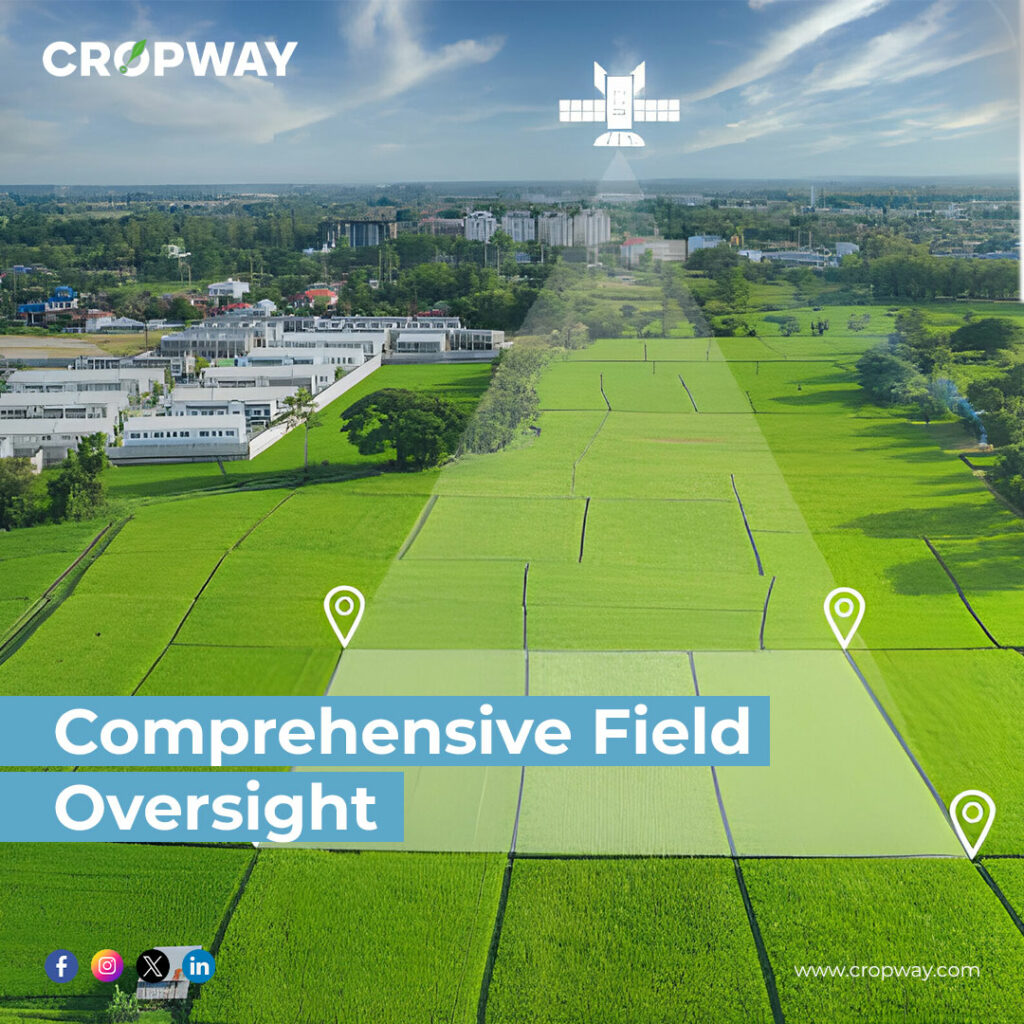
Agricultural drones provide farmers with an expansive 360-degree view of their fields, enabling proactive identification of potential issues before they escalate. This panoramic perspective becomes a valuable tool for crop management strategies.
Precision in Crop Monitoring:

Leveraging advanced drone capabilities, farmers can maximize crop yields by gaining access to high-frequency satellite imagery. This technology covers vast growing areas globally, offering detailed insights into spatial variability and ensuring up-to-date data throughout the crop production cycle.
Advanced Crop Health Monitoring:
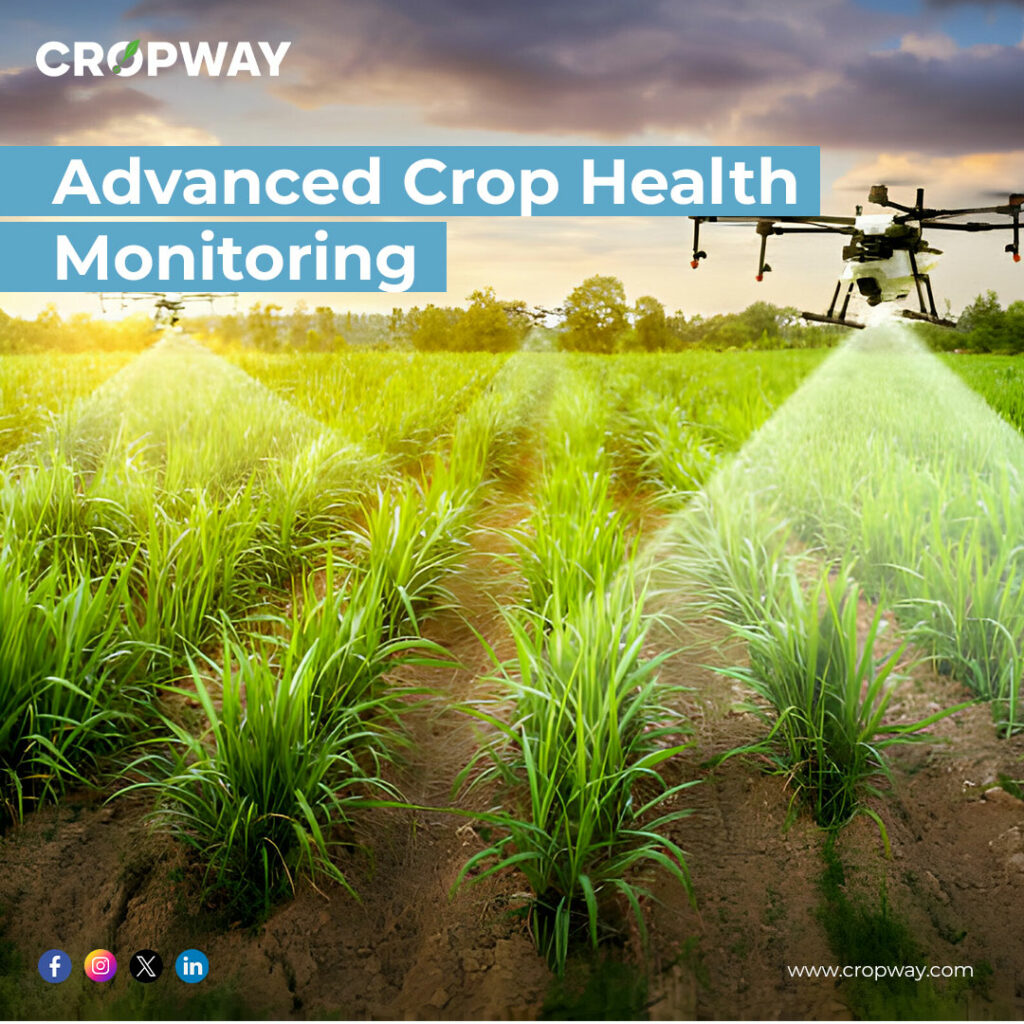
Innovative software, driven by computer vision, AI, and spatial technology, enables detailed crop health maps and seasonal field development tracking. This technology aids in identifying plant diseases, pest infestations, stress factors, and other critical aspects without the need for constant manual intervention.
Integrated AgTech Solutions:
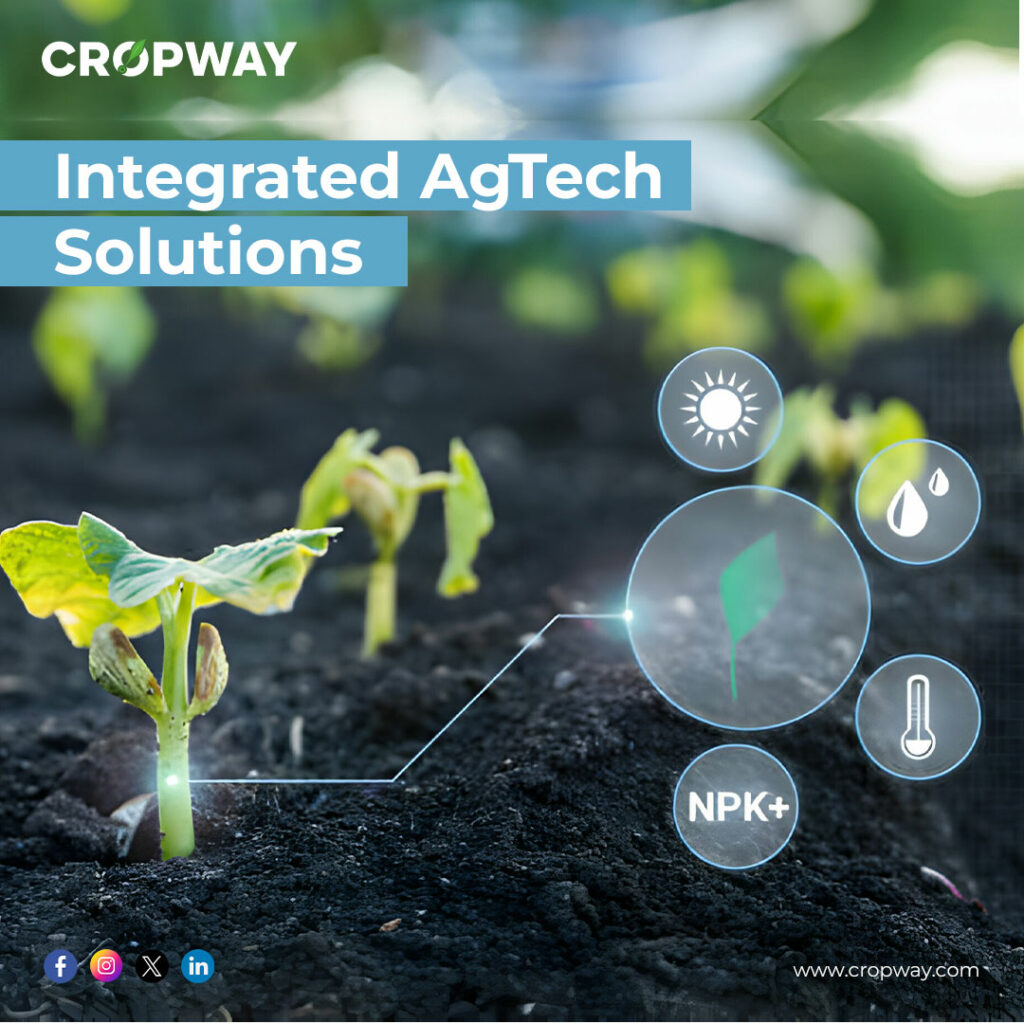
The integration of AgTech solutions such as Cropway, incorporating AI-powered algorithms, enhances farm management capabilities. This includes real-time price forecasting, pest and disease detection, fertilizer calculation, and crop prediction, contributing to a streamlined and sustainable supply chain.
Strategic Crop Analysis:

The agricultural drone sector holds vast potential for growth, driven by continuous technological advancements. Improved imaging capabilities contribute to more accurate crop analysis, enabling farmers to make educated decisions based on precise information gathered by drones.
Efficient Crop Production Management:

Drones empower farmers to analyze crops efficiently, leading to informed decisions and accurate crop information. Software programs designed for crop analysis and correction have the potential to thrive in this evolving market, allowing farmers to focus on overall production tasks.
Advancements in Precision Agriculture:

Agricultural drones bring advantages such as improved efficiency, enhanced productivity, increased crop yield, and heightened profitability. From crop surveillance to precise spraying and irrigation management, drones contribute to sustainable and informed decision-making.
How Does Drone Technology Work In Agriculture?
Drone technology in agriculture works by utilizing unmanned aerial vehicles (UAVs) equipped with various components like propulsion and navigation systems, GPS, sensors, cameras, programmable controllers, and automated flight equipment. These drones are designed to capture accurate information for agricultural purposes.
- Area Analysis: The first step involves delineating the testing area, conducting thorough analyses, and inputting precise GPS information into the drone’s navigation system.
- Utilizing Unmanned AerialVehicles: Unmanned aerial vehicles (UAVs) operate autonomously, following pre-set flight patterns example for drone spraying or surveying to gather necessary data efficiently as per predefined need of business.
- Precision Spraying:The drone flight above the plants with necessary payloads enables spot treatment. Drones can detect infected areas using sensors and cameras, work on them, leaving healthy parts of the field untouched. This process saves time, increases safety, reduces costs, and improves efficiency in addressing crop issues.
- Data Upload: Once the required data is captured using sensors like multispectral or RGB sensors, it undergoes processing through various software for further analysis and interpretation.
- Data Formatting: After collection, the data is formatted for ease of understanding by farmers, facilitating precision farming efforts. Methods such as 3D mapping or Photogrammetry are commonly employed to present the extensive dataset in a comprehensible manner.
- Output Delivery:This streamlined approach ensures efficient and accurate data interpretation, providing valuable information for informed decision-making in various fields, from agriculture to surveying and beyond.
Conclusion
While the adoption of agricultural drone technology may initially present a learning curve, the investment in understanding its intricacies promises substantial returns over time. Farmers embarking on this technological journey must grasp the complete process, from defining clear goals to achieving a harmonious integration of drones and software solutions. The challenge lies in cultivating familiarity with the underlying principles of such advanced technology. To surmount these hurdles, farmers and agribusiness owners may seek comprehensive training or establish partnerships with experts in the drone industry such as Cropway to ensure the acquisition of reliable data. As drones redefine data acquisition across various industries, their evolution and refinement over the coming years will undoubtedly shape a more advanced and accessible future.
From increased yield to improved efficiency, the transformative impact of agricultural drones on modern farming practices is undeniable. As we navigate the dynamic landscape of precision agriculture, solutions like Cropway stand out as invaluable tools for farmers seeking efficiency, sustainability, and enhanced crop management. By harnessing cutting-edge technology, including AI-powered algorithms and advanced sensors, Cropway empowers farmers with real-time insights into crop health, pest detection, and predictive analysis. As the agricultural sector continues to embrace innovation, Cropway’s integrated AgTech solutions pave the way for a more resilient and productive future in farming.

